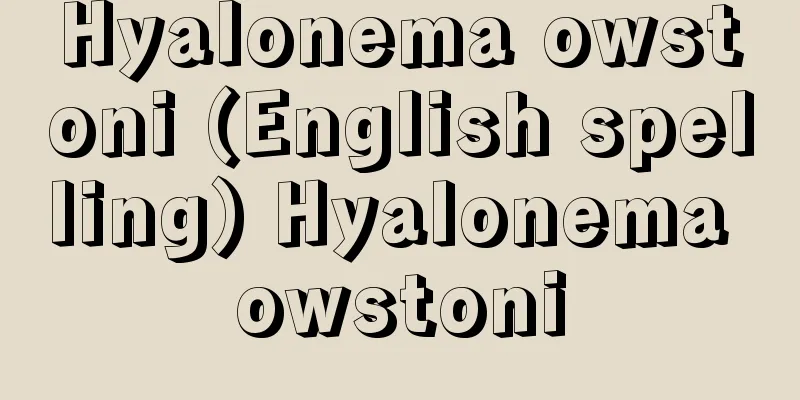Anton Pavlovich Chehov

|
Russian novelist and playwright. World-famous as a master of the short story and the perfection of modern drama. He was born on January 29, 1860 (January 17, lunar calendar) in Taganrog, a port city in southern Russia, as the third son of a general goods merchant, but when he was 16, his family went bankrupt. He entered the Faculty of Medicine at Moscow University and wrote short stories and skits for humor magazines and newspapers to support his family. After Alexander II was assassinated by the Narodniks (People's Will) in March 1881, Russia entered a reactionary period known as the Gray 1980s. Meanwhile, Dostoevsky died in 1881, Turgenev in 1883, and Tolstoy published "Confession" in 1882, choosing to become a religious man. The golden age of Russian literature was coming to an end, and Chekhov's works were published mainly in weekly magazines. He wrote more than 400 works over a period of seven years under the pen names Antosha Chekhonte and others. Among his works are many excellent short stories such as "The Death of a Petty Official" (1883) and "The Chameleon" (1884), which satirize the world of government officials, and "The Oyster" (1885), "Sorrow" (1885), "Vanka" (1886), and "Sleepy" (1888), which are full of sympathy for people living on the fringes of society. However, with the advice of the elder writer Grigorovich, he began to aspire to serious literature, and published under his real name such works as "The Wilderness" (1888), a full-length story depicting Russian nature with a fresh sensibility, "The Light" (1888), a medium-length story dealing with pessimism that captured the hearts of young people in the 1980s, and "A Lonely Tale" (1889), which depicts the despair of a retired old professor who has no life of his own, and established a solid reputation. From this time onwards, he wrote nine vaudeville stories, including "The Bear" (1888) and "On the Harm of Tobacco" (1902), which depicted the world of his earlier short stories. In order to break new ground, he travelled alone across Siberia to Sakhalin in 1890, despite having tuberculosis since graduating from university in 1884, to thoroughly investigate the conditions of exiled prisoners. This trip produced a massive account, "Sakhalin Island" (1895). [Takuya Hara] After the report "Sakhalin Island"Before his trip, he believed in depicting "life as it is," but after his trip, he began to focus on "portraying life as it is, while giving a sense of how life should be." Many of his works after the trip are based on social issues, and he himself was active in social activities such as providing relief to famine refugees, preventing cholera, and establishing schools and libraries. His work "Room No. 6" (1892) depicts a doctor who becomes indifferent to everything after realizing the futility of reforming reality, and ends up locked behind iron bars while arguing with a madman who is a patient. It shocked readers as a work that alluded to the fate of Russia and its intellectuals trapped behind the iron bars of autocracy. He developed the problem of how to reform reality, which 19th century Russian intellectuals had been thinking about, in works such as "The House with a Mezzanine" (1895) and "My Life" (1896), but he mainly criticized intellectuals who played with empty theories without doing anything in reality. As a doctor, he came into contact with the lives of peasants and observed their miserable existence. This resulted in a series of rural novels, such as "The Peasants" (1897) and "In the Valley" (1899), which depicted the lives of peasants, worse than those of pigs, and the tragedies that arose from them. He also correctly understood the inevitability and terrifying nature of capitalism that was enveloping Russia at the end of the century, as is clear from "Three Years" (1894), which depicts the suffering of a young man who dreams of escaping his current life but unwittingly becomes a slave to capital. [Takuya Hara] Sharp criticism of everyday lifeHis tuberculosis worsened as a result of his trip to Sakhalin and the subsequent strain he underwent, and even after he relocated to Yalta in 1898, he produced many masterpieces in his later years. A common theme in his later works is criticism of people who live a life that passes by mechanically and by inertia without any awareness or purpose in life, and who become snobs because of their everyday life. Like the protagonists of "Currant" (1898) and "Ionuich" (1898), young men who were once full of ideals and love stop thinking about the meaning of life in the midst of everyday reality, and when they begin to repeat the same routine of eating and sleeping every day, they degenerate into snobs who "do not live their own life." The protagonist of "The Man in the Box" (1898) is also trapped in a box of convention and hypocrisy, unable to move, and has no choice but to live a borrowed life. In Tolstoy's highly praised short story, "The Little Lover" (1899), Olenika has no luck with men and changes husbands many times, but each time she takes her new husband's opinion as her own and builds her life according to his standards. This is also a borrowed life. "The Lady with the Dog" (1899) is about a middle-aged man and a married woman who have a fleeting affair in a summer resort, but after returning to their own lives, they find true and deep love in their hearts and reunite, and from there their painful but real life begins. This theme also reflects Tolstoy's view of life. The desire for a true life is naturally linked to the expectation of a new and better life. This is also the theme of his last novel, "The Betrothed" (1902). And the cry of the novel's protagonist, Nadia, for a new and bright life also resonates in his plays. Chekhov wrote plays such as "Platonov" (1881), "Ivanov" (1887), and "The Forester" (1889), the prototype of "Uncle Vanya," from his youth, but his later works "The Seagull," "Uncle Vanya," "Three Sisters," and "The Cherry Orchard" are generally called his four major plays and are considered masterpieces that perfected modern Russian realism. These plays, like his short stories from his later years, were written on the theme of what is the true way of life for humans, and with the support of a good supporter of Stanislavski's Moscow Art Theatre, they marked a new era in the history of theater. His plays are usually called "still plays." However, this does not mean that everyday life is depicted on stage, but that all the dramatic events in the works are handled backstage. What these plays have in common is the setting of Act 1 (Arrival) and Act 4 (Departure), and how the characters in the plays accept and survive the events within this limited time frame, which is the same theme that runs through the novels of his later years. In 1901, he married Olga Knipper, an actress from the same theater, but his illness worsened and he passed away on July 15, 1904 (July 2 in the lunar calendar) at the age of 44 in Badenweiler, a hot spring resort in southern Germany, where he was recuperating. He is buried in the Novodevichy Monastery Cemetery in Moscow. Chekhov is the founder of a literary technique that could be called 20th century realism, and he had a huge influence on early Russian writers such as Gorky, Korolenko, and Ivan Bunin. His influence even reached abroad, with strong traces of Chekhov's influence remaining in the works of British writers such as Katherine Mansfield and Virginia Woolf, and American writers such as Ernest Hemingway. [Takuya Hara] Impact on JapanHis works were first translated into English in Japan at the end of the Meiji period, and later translated directly from Russian by Senuma Kayo. Since then, they have been loved by many readers and have had a great influence on the establishment and development of modern literature. At one time, he was perceived as a dark and nihilistic writer, but now his literature is properly understood for its humor, love of humanity, and hope for the future. His influence is particularly strong in the works of Kunikida Doppo, Shiga Naoya, Masamune Hakucho, Hirotsu Kazuo, and Ibuse Masuji. Among contemporary writers, Miura Tetsuo and Abe Akira are some of the examples. His plays are an immortal part of the Moscow Art Theatre's repertoire, and in Japan, his four major plays and vaudevilles have been performed thousands of times since the Tsukiji Little Theatre. [Takuya Hara] "The Complete Works of Chekhov, translated by Kanzai Kiyoshi, Ikeda Kentaro, and Hara Takuya, 16 volumes (1976-77, Chuokoron-Shinsha)" ▽ "Chekhov's Life, by Sato Kiyorō (1966, Chikuma Shobo)" ▽ "Chekhov Studies, edited by Hara Takuya (1969, Chuokoron-Shinsha)" ▽ "Memories of Chekhov, edited by Ikeda Kentaro (1969, Chuokoron-Shinsha)" [References] | | | | | [Chronology] |Source: Shogakukan Encyclopedia Nipponica About Encyclopedia Nipponica Information | Legend |
|
ロシアの小説家、劇作家。短編の名手、近代演劇の完成者として世界的に有名。 1860年1月29日(旧暦1月17日)、南ロシアの港町タガンログに雑貨商の三男として生まれたが、16歳のときに家が破産、モスクワ大学医学部に入ると同時に、一家を養うため、ユーモア雑誌や新聞に短編やコントを書きまくった。81年3月、ナロードニキ「人民の意志派」によるアレクサンドル2世暗殺のあと、ロシアは灰色の80年代とよばれる反動時代に入り、一方81年にドストエフスキーが、83年にツルゲーネフが死亡、82年にはトルストイが『懺悔(ざんげ)』を発表して宗教家としての道を選び、ロシア文学の黄金時代は終わりかけ、チェーホフの作品発表舞台はもっぱら週刊誌であった。アントーシャ・チェホンテその他のペンネームで書いたそれらの作品は、7年間に400編以上ある。そのなかには、官吏たちの世界を風刺的に描いた『小役人の死』(1883)や『カメレオン』(1884)、社会の片隅に生きる人間への同情に満ちた『牡蠣(かき)』(1885)、『悲しみ』(1885)、『ワーニカ』(1886)、『ねむい』(1888)など珠玉の短編も少なくない。だが、長老作家グリゴロービチの忠告もあって、本格的な文学を志すようになり、ロシアの自然を新鮮な感覚で描いた長編『曠野(こうや)』(1888)、80年代の青年の心をとらえたペシミズムを扱った中編『ともしび』(1888)、自己の人生をもたぬ退職老教授の絶望をテーマとする『侘(わび)しい話』(1889)などを本名で発表して、確固たる地位を築いた。このころから『熊(くま)』(1888)、『タバコの害について』(1902)など9編のボードビルを書いているが、それらは初期短編の世界を舞台に描き出したものである。さらに彼は新境地を開拓すべく、大学卒業の年(1884)以来の結核をもかえりみず、1890年に単身シベリアを横断してサハリンに渡り、流刑囚の実情をつぶさに調査した。この旅行は膨大な報告記『サハリン島』(1895)を生んだ。 [原 卓也] 報告記『サハリン島』以後旅行前の彼は「あるがままの人生」を描くことを信条としていたが、旅行後は「あるがままの人生を描きながら、その背後に、かくあるべき人生を感じさせる」ことに心を砕くようになった。旅行後の作品には社会問題をテーマにしたものが多いし、彼自身も飢饉(ききん)の難民救済やコレラの防疫、学校や図書館の設立など、社会活動を熱心に行っている。現実改革のむなしさを知ってすべてに無関心になり、患者の狂人と議論しているうちに自分まで鉄格子の中に閉じ込められてしまう医者を描いた『六号室』(1892)は、専制政治の鉄格子に閉じ込められたロシアと知識人の運命を暗示する作品として、読者に大きな衝撃を与えた。現実をいかに改革するかという、19世紀ロシアの知識人が等しく考え続けた問題を、彼は『中二階のある家』(1895)、『わが人生』(1896)などの作品で展開してみせたが、彼がもっぱら批判を向けたのは、現実にはなにひとつせずに空論をもてあそぶ知識人に対してである。彼は医者として百姓たちの生活に接し、彼らの悲惨な暮らしを観察した。それは、豚にも劣る百姓の生活と、そこから生ずる悲劇を描いた『百姓たち』(1897)、『谷間』(1899)など、一連の農村小説を生んだ。また、現在の生活から逃れようと夢みながら、いつしか資本の奴隷になってゆく青年の苦悩を描いた『三年』(1894)に明らかなように、彼は世紀末のロシアを押し包む資本主義の必然性と恐ろしい本質とを正しく理解していた。 [原 卓也] 鋭い日常性への批判サハリン旅行とその後の無理がたたって結核は進行し、1898年ヤルタに転地したのちも、彼は晩年の数々の傑作を生み出している。後期の作品に共通するテーマは、人生に対する自覚も目的もなく機械的に惰性で過ぎてゆく生活と、その日常性のために俗物と化してゆく人間への批判である。『すぐり』(1898)、『イオーヌイチ』(1898)の主人公のように、かつては理想や愛に燃えた青年も、日常的現実のなかで人生の意義を考えることをやめ、食べて寝るだけの毎日を繰り返すようになったとき、「自分自身の人生を生きていない」俗物に堕落する。『箱にはいった男』(1898)の主人公も、因襲や偽善の箱に閉じ込められて身動きもできず、借り物の人生を生きるほかない。トルストイの絶賛した短編『可愛(かわい)い女』(1899)のオーレニカは、男運に恵まれず何度も夫をかえるが、そのたびに新しい夫の意見をそのまま自分の考えとし、その尺度にあわせて生活を築いてゆく。これもやはり借り物の人生である。『犬を連れた奥さん』(1899)は、夏の避暑地でかりそめの情事を結んだ中年男と人妻とが、それぞれ自分の生活に戻ったあと、心の内に真の深い愛をみいだして再会し、そこから2人の苦しい、しかし本当の人生が始まるという主題で、ここにも彼の人生観が表れている。真の人生への希求は、当然、よりよい新しい生活への期待に結び付く。それは最後の小説『いいなずけ』(1902)の主題でもある。そして、小説の主人公ナージャの、新しい明るい生活に対する期待の叫びは、彼の戯曲にも響いているのである。 チェーホフは青年時代から『プラトーノフ』(1881)、『イワーノフ』(1887)、『ワーニャ伯父さん』の原型である『森の主』(1889)などの戯曲を書いているが、晩年の作品である『かもめ』『ワーニャ伯父さん』『三人姉妹』『桜の園』は、普通、彼の四大戯曲とよばれ、ロシア近代リアリズム演劇を完成させた傑作とみなされている。これらの戯曲は晩年の短編と同様、人間にとって真の生き方とはどういうものかというテーマで書かれたものだが、スタニスラフスキーのモスクワ芸術座というよき理解者を得て、演劇史に新時代を画した。彼の戯曲は普通「静劇」とよばれている。これはしかし舞台上で日常生活を描いたことを意味するわけではなく、作品中のドラマチックな事件をすべて舞台裏で処理したためである。これらの戯曲に共通しているのは、第1幕(到着)、第4幕(出発)という状況設定であり、この限られた時間のなかで作中人物がいかに事件を受け止め、生き抜くかを示しており、これは晩年の小説を貫くテーマと等しい。1901年、同座の女優オリガ・クニッペルと結婚したが、病は悪化する一方で、04年7月15日(旧暦7月2日)、療養先である南ドイツの温泉地バーデンワイラーで44歳の一生を閉じた。墓はモスクワのノボジェービチー修道院墓地にある。 チェーホフはいわば20世紀リアリズムともいうべき文学手法の創始者であり、初期ゴーリキー、コロレンコ、イワン・ブーニンなどにきわめて大きな影響を与えた。さらにその影響は国外にまで及び、イギリスのキャサリン・マンスフィールド、バージニア・ウルフ、アメリカのアーネスト・ヘミングウェイなどの作品には、チェーホフに学んだ痕跡(こんせき)が強くとどめられている。 [原 卓也] 日本への影響彼の作品はわが国でも明治末期に、最初は英訳から、のちに瀬沼夏葉(せぬまかよう)が直接ロシア語から翻訳紹介して以来、多くの読者に愛され、近代文学の成立と発達に大きな影響を与えてきた。一時は暗い虚無的な作家として受け取られた時期もあったが、現在では彼の文学に存するユーモアや人間愛、未来への期待なども正しく理解されている。国木田独歩(どっぽ)、志賀直哉(なおや)、正宗白鳥(まさむねはくちょう)、広津和郎(かずお)、井伏鱒二(いぶせますじ)などの文学には、彼の影響がとくに濃厚に表れているといってよい。現代作家では三浦哲郎(てつお)、阿部昭(あきら)などがあげられるだろう。また、彼の戯曲はモスクワ芸術座の不朽のレパートリーになっているが、わが国でも彼の四大戯曲やボードビルは、築地(つきじ)小劇場以来、実に何千回も上演されている。 [原 卓也] 『神西清・池田健太郎・原卓也訳『チェーホフ全集』全16巻(1976~77・中央公論社)』▽『佐藤清郎著『チェーホフの生涯』(1966・筑摩書房)』▽『原卓也編『チェーホフ研究』(1969・中央公論社)』▽『池田健太郎編『チェーホフの思い出』(1969・中央公論社)』 [参照項目] | | | | | [年表] |出典 小学館 日本大百科全書(ニッポニカ)日本大百科全書(ニッポニカ)について 情報 | 凡例 |
>>: Cheboksary (English spelling) Чебоксары/Cheboksarï
Recommend
knight (English)
A medieval European horse-riding warrior, charact...
Khālsā (English spelling) Khalsa
…After his father, Tegh Bahadur, was captured and...
Güde, H.
...National romanticism fostered outstanding arti...
Haplogynae
…The Ecribellatae are divided into two groups, th...
Cube agar - Kakukanten
...This process takes 1-2 weeks, and the product ...
Public welfare
It refers to the overall interest that is establi...
Ito [city] - Ito
A city in the northeastern part of the Izu Peninsu...
Nemesis - Nemesisu (English spelling)
A goddess in Greek mythology. She is interpreted ...
Tin mineral (tin mineral) - Suzukobutsu (English spelling) tin mineral
This refers to a mineral whose main component is t...
Noland, K.
...The former include R. Rauschenberg, J. Jones, ...
Gold - Kin
Au. Element with atomic number 79. Group 11 trans...
Gove - Gove (English spelling)
Bauxite mine in the northeastern tip of the North...
Death Instinct - Todestriebe [Germany]
S. Freud's term. More precisely, the "dea...
Main part - Motokata
1. Court Kagura Mikagura During the ceremony, the ...
Ogano [town] - Ogano
A town in Chichibu County, western Saitama Prefect...



![D'Entrecasteaux [Islands] - D'Entrecasteaux](/upload/images/67cc2a72b9d89.webp)





